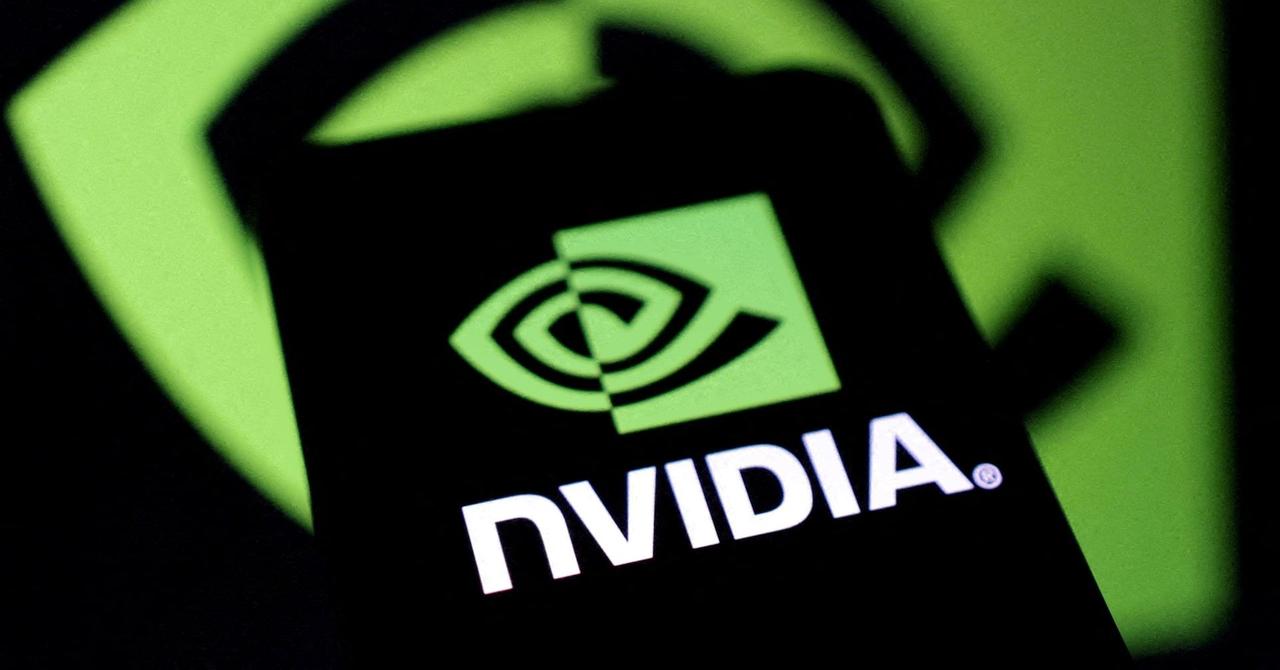3 Critical Insights for Nvidia Investors: Navigating the AI Chip Giant's Future
2 Sources
2 Sources
[1]
3 Things Every Nvidia Investor Must Know | The Motley Fool
Nvidia's stock has massive expectations built into it, but the company could easily attain those lofty goals. Nvidia (NVDA -2.61%) has become the hottest stock on the market due to its incredible rise thanks to unprecedented demand for artificial intelligence (AI). With the stock recently up around 160% this year, its rise has made many investors a lot of money. However, if you're going to be an Nvidia investor, there are three things you must know that could affect your perspective on the stock. Although Nvidia has some software products, it's not a software company. Its primary product is its graphics processing units (GPUs), which enable its users to train AI models. Because GPUs can process multiple calculations in parallel, they are effective at complex computing tasks. Combine that with the ability to hook hundreds or thousands together, and it makes sense that Nvidia's GPUs are flying off the shelf. However, times aren't always peachy at Nvidia. The chip industry is known to be cyclical, as demand rises and falls based on a secondary trend. Nvidia's last two cyclical cycles were tied to cryptocurrency, and the company saw significant revenue drawdowns after the cycle was complete. However, Nvidia has always emerged a stronger company from its various cyclical drawdowns. This is key, as investors must weigh this success against the backdrop of another drawdown that is eventually coming. Once AI computing demand is built out, Nvidia will undoubtedly see a drop in demand. The problem is, nobody knows if that's in the next quarter, next year, or the next decade. If it doesn't occur for a while, investing in Nvidia now could be smart. But investors could be in trouble if it's right around the corner. After a run-up like Nvidia's, it's no surprise that the stock has a premium price tag attached to it. But just how expensive is it? Because Nvidia is a mature company, using the price-to-earnings (P/E) ratio is a smart idea. Additionally, because Nvidia is experiencing significant change, the forward P/E ratio is also a useful metric, as the two combined show what expectations are built into the stock over the next 12 months. A valuation of 47 times forward earnings is incredibly expensive, especially considering the S&P 500 trades for around 22.7 times forward earnings. Because of Nvidia's premium status and top-tier execution, seeing the stock trade at a 30 times earnings multiple when the pandemonium has settled down isn't out of the question. But for Nvidia to reach that valuation, it must grow its earnings by 151%. While some may think that's easy, especially considering that Nvidia grew its earnings per share by 629% in Q1 of FY 2025 (ending April 28), it will start reaching quarters with tougher comparison figures. As a result, its growth rates won't look as impressive, even though they will still be rapid. Wall Street analysts expect Nvidia to grow its earnings by 60% over the next 12 months. So it's not out of the question that the company must continue growing at its current pace for two years to return to a reasonable valuation. That's a long time of sustained strong growth. But is it realistic? Although it seems like all anyone has talked about is AI this and AI that, it's because AI will be a life-altering product like the internet. Technology has barely scratched the surface of how AI can assist in daily tasks, and to power the next wave of innovation even more computing power will be needed. Furthermore, a GPU used in a data center lasts around five years, so eventually it will need to be replaced. This will fuel another wave of demand for Nvidia's GPUs, which could further extend Nvidia's growth. As an investor, Nvidia's valuation scares me. But there is a case to be made that the stock could still be worth the price you're paying today if the growth extends out for another few years. If you keep that in mind, Nvidia stock may be for you. Otherwise, if you invest in an index fund, you'll still have heavy Nvidia exposure because it makes up about 6.7% of the S&P 500.
[2]
3 Things Every Nvidia Investor Must Know
Nvidia (NASDAQ: NVDA) has become the hottest stock on the market due to its incredible rise thanks to unprecedented demand for artificial intelligence (AI). With the stock recently up around 160% this year, its rise has made many investors a lot of money. However, if you're going to be an Nvidia investor, there are three things you must know that could affect your perspective on the stock. 1. Nvidia is historically a cyclical company Although Nvidia has some software products, it's not a software company. Its primary product is its graphics processing units (GPUs), which enable its users to train AI models. Because GPUs can process multiple calculations in parallel, they are effective at complex computing tasks. Combine that with the ability to hook hundreds or thousands together, and it makes sense that Nvidia's GPUs are flying off the shelf. However, times aren't always peachy at Nvidia. The chip industry is known to be cyclical, as demand rises and falls based on a secondary trend. Nvidia's last two cyclical cycles were tied to cryptocurrency, and the company saw significant revenue drawdowns after the cycle was complete. NVDA Revenue (Quarterly) data by YCharts However, Nvidia has always emerged a stronger company from its various cyclical drawdowns. This is key, as investors must weigh this success against the backdrop of another drawdown that is eventually coming. Once AI computing demand is built out, Nvidia will undoubtedly see a drop in demand. The problem is, nobody knows if that's in the next quarter, next year, or the next decade. If it doesn't occur for a while, investing in Nvidia now could be smart. But investors could be in trouble if it's right around the corner. 2. Nvidia's valuation is incredibly high After a run-up like Nvidia's, it's no surprise that the stock has a premium price tag attached to it. But just how expensive is it? Because Nvidia is a mature company, using the price-to-earnings (P/E) ratio is a smart idea. Additionally, because Nvidia is experiencing significant change, the forward P/E ratio is also a useful metric, as the two combined show what expectations are built into the stock over the next 12 months. NVDA PE Ratio data by YCharts A valuation of 47 times forward earnings is incredibly expensive, especially considering the S&P 500 trades for around 22.7 times forward earnings. Because of Nvidia's premium status and top-tier execution, seeing the stock trade at a 30 times earnings multiple when the pandemonium has settled down isn't out of the question. But for Nvidia to reach that valuation, it must grow its earnings by 151%. While some may think that's easy, especially considering that Nvidia grew its earnings per share by 629% in Q1 of FY 2025 (ending April 28), it will start reaching quarters with tougher comparison figures. As a result, its growth rates won't look as impressive, even though they will still be rapid. Wall Street analysts expect Nvidia to grow its earnings by 60% over the next 12 months. So it's not out of the question that the company must continue growing at its current pace for two years to return to a reasonable valuation. That's a long time of sustained strong growth. But is it realistic? 3. AI demand isn't going away Although it seems like all anyone has talked about is AI this and AI that, it's because AI will be a life-altering product like the internet. Technology has barely scratched the surface of how AI can assist in daily tasks, and to power the next wave of innovation even more computing power will be needed. Furthermore, a GPU used in a data center lasts around five years, so eventually it will need to be replaced. This will fuel another wave of demand for Nvidia's GPUs, which could further extend Nvidia's growth. As an investor, Nvidia's valuation scares me. But there is a case to be made that the stock could still be worth the price you're paying today if the growth extends out for another few years. If you keep that in mind, Nvidia stock may be for you. Otherwise, if you invest in an index fund, you'll still have heavy Nvidia exposure because it makes up about 6.7% of the S&P 500. The Motley Fool Stock Advisor analyst team just identified what they believe are the 10 best stocks for investors to buy now... and Nvidia wasn't one of them. The 10 stocks that made the cut could produce monster returns in the coming years. Consider when Nvidia made this list on April 15, 2005... if you invested $1,000 at the time of our recommendation, you'd have $741,989!* Stock Advisor provides investors with an easy-to-follow blueprint for success, including guidance on building a portfolio, regular updates from analysts, and two new stock picks each month. The Stock Advisor service has more than quadrupled the return of S&P 500 since 2002*. Keithen Drury has no position in any of the stocks mentioned. The Motley Fool has positions in and recommends Nvidia. The Motley Fool has a disclosure policy. The views and opinions expressed herein are the views and opinions of the author and do not necessarily reflect those of Nasdaq, Inc.
Share
Share
Copy Link
Nvidia's dominance in AI chips has led to unprecedented growth, but investors must consider key factors like market saturation, competition, and valuation risks. This article explores three crucial aspects every Nvidia investor should understand.

Nvidia's Meteoric Rise in the AI Chip Market
Nvidia, the graphics processing unit (GPU) manufacturer, has experienced an extraordinary surge in its stock price, driven by the artificial intelligence (AI) boom. The company's GPUs, initially designed for gaming, have become the go-to choice for training large language models and other AI applications. This pivot has catapulted Nvidia to the forefront of the AI revolution, making it a darling of investors
1
.The Potential for Market Saturation
While Nvidia's growth has been impressive, investors must be aware of the potential for market saturation. The company's data center revenue, which includes AI-related sales, has seen exponential growth. However, this rapid expansion raises questions about sustainability. As more companies invest in AI infrastructure, there's a possibility that demand could plateau, potentially impacting Nvidia's future growth trajectory
2
.Rising Competition in the AI Chip Space
Nvidia's success has not gone unnoticed, attracting fierce competition from tech giants and startups alike. Companies such as AMD, Intel, and even cloud service providers like Google and Amazon are developing their own AI chips. This increasing competition could potentially erode Nvidia's market share and profit margins in the long term. Investors should closely monitor how Nvidia maintains its technological edge and market position in the face of these challengers
1
.Related Stories
Valuation Concerns and Market Expectations
The remarkable rise in Nvidia's stock price has led to concerns about its valuation. With a price-to-earnings ratio significantly higher than the S&P 500 average, the company's stock is priced for perfection. This high valuation assumes continued strong growth and market dominance. Investors must consider whether Nvidia can consistently meet or exceed these lofty expectations. Any disappointment in earnings or growth projections could lead to significant stock price volatility
2
.The Importance of Diversification
Given the potential risks associated with Nvidia's current market position and valuation, investors are advised to consider the role of diversification in their portfolios. While Nvidia's performance has been stellar, relying too heavily on a single stock, especially in the fast-paced and competitive tech sector, can expose investors to unnecessary risk. A balanced approach, incorporating a mix of assets and sectors, can help mitigate potential downturns while still allowing participation in Nvidia's growth story
1
2
.References
Summarized by
Navi
[1]
[2]
Related Stories
Recent Highlights
1
OpenAI launches ChatGPT app store, opening doors for third-party developers to build AI-powered apps
Technology

2
Chinese AI Models Close Gap With US Systems as Open-Source Strategy Reshapes Global Tech Order
Policy and Regulation

3
OpenAI updates ChatGPT with teen safety rules as child exploitation reports surge 80-fold
Technology







